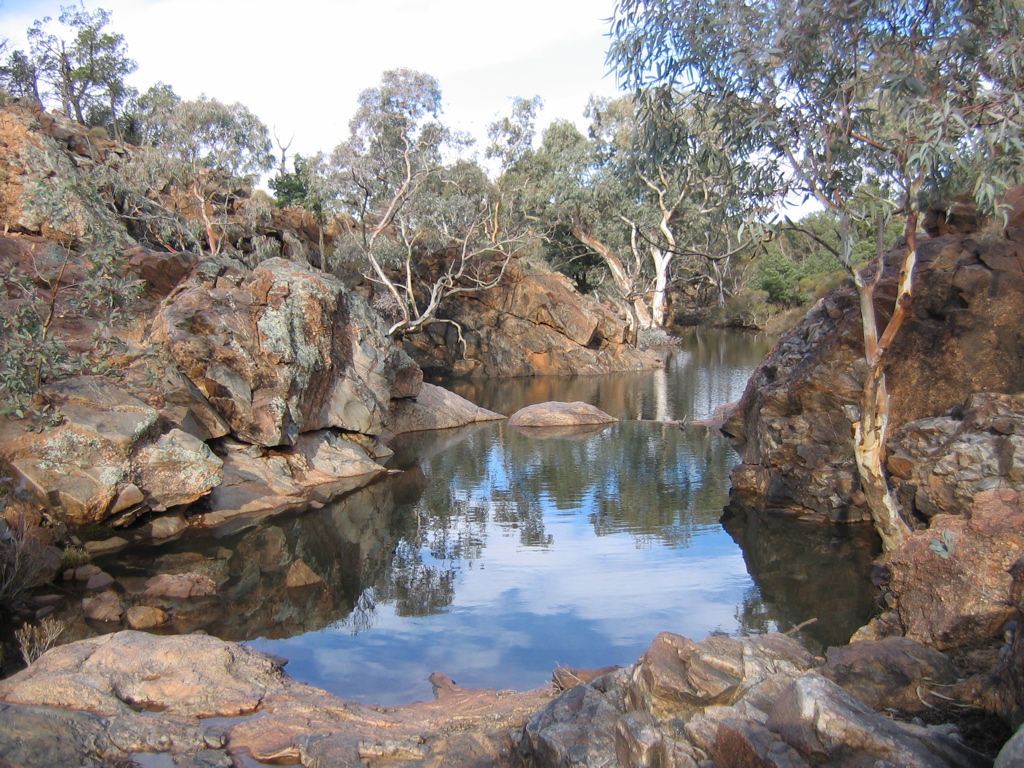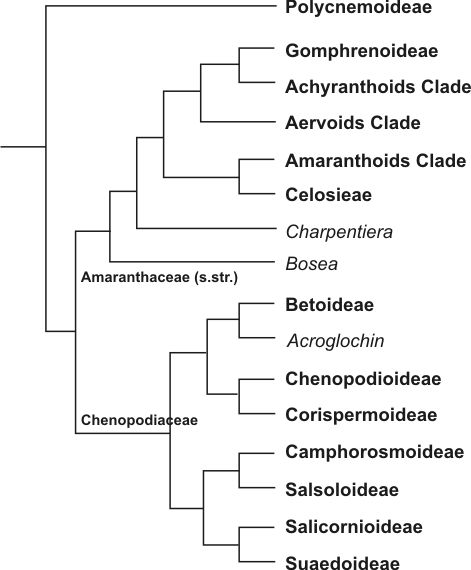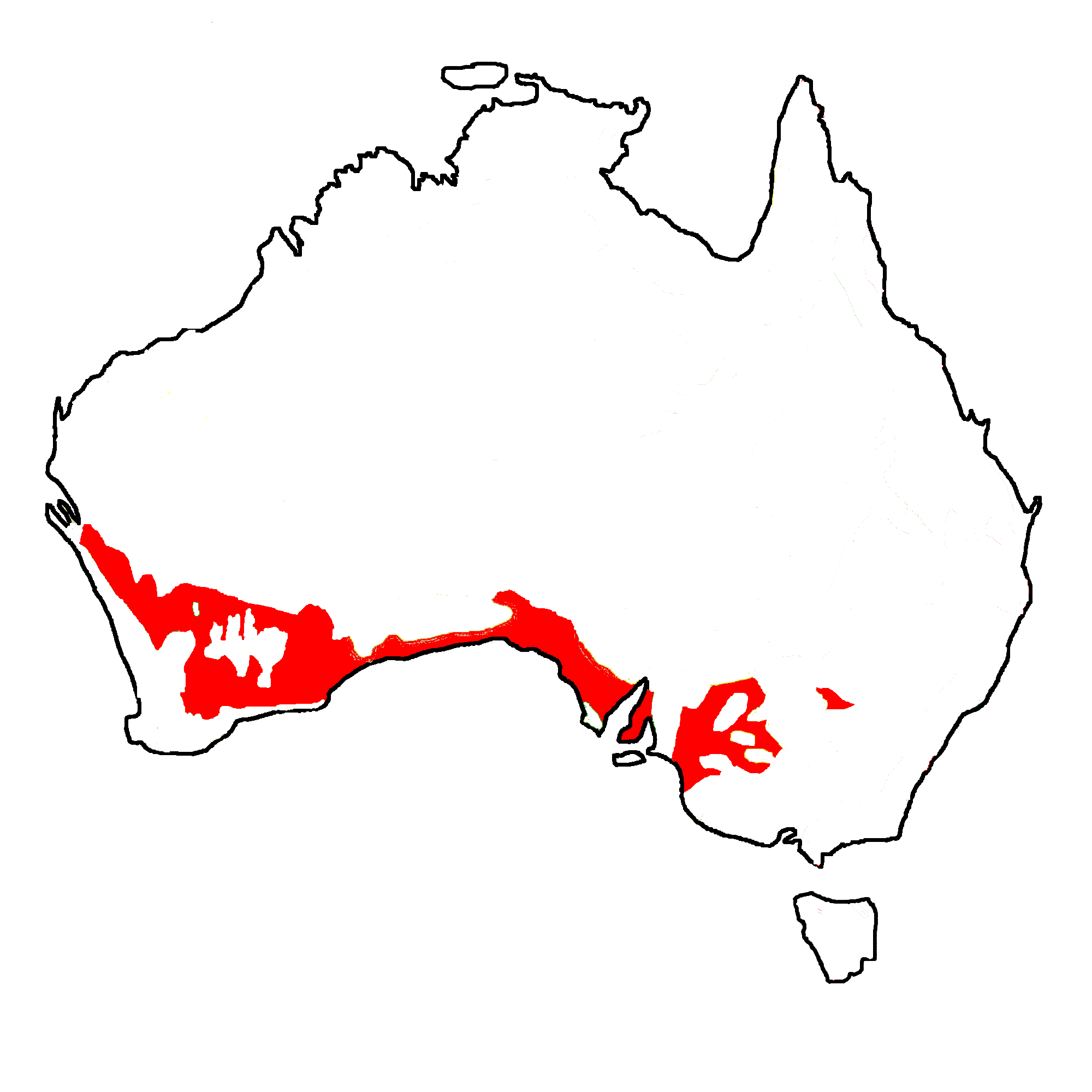|
Neds Corner Station
Neds Corner Station is a 30,000 ha nature reserve owned by the Trust for Nature. It is a former sheep grazing property on a pastoral lease abutting the Murray River and the Murray-Sunset National Park in the Mallee region of north-western Victoria, south-eastern Australia. History The station was established in 1849 by Edward Meade ('Ned') Bagot, son of Charles Hervey Bagot, a wealthy South Australian pastoralist and parliamentarian. Bagot first visited the area in late 1847 when he retrieved the body of his friend Fred Handcock, a fellow pastoralist who drowned nearby. Bagot started by grazing cattle but soon switched to sheep, using riverboats on the Murray to transport the wool. The property was named after Ned, a shepherd on the property. In 1876 the lease was sold to Robert Barr Smith. In 1920 the lease was taken over by the Neds Corner Pastoral Company. In 1946 the lease was sold again to the Kidman Pastoral Company, owned by Sir Sidney Kidman. In 2002 it was pur ... [...More Info...] [...Related Items...] OR: [Wikipedia] [Google] [Baidu] |
Nature Reserve
A nature reserve (also known as a wildlife refuge, wildlife sanctuary, biosphere reserve or bioreserve, natural or nature preserve, or nature conservation area) is a protected area of importance for flora, fauna, funga, or features of geological or other special interest, which is reserved and managed for purposes of Conservation (ethic), conservation and to provide special opportunities for study or research. They may be designated by government institutions in some countries, or by private landowners, such as charities and research institutions. Nature reserves fall into different IUCN protected area categories, IUCN categories depending on the level of protection afforded by local laws. Normally it is more strictly protected than a nature park. Various jurisdictions may use other terminology, such as ecological protection area or private protected area in legislation and in official titles of the reserves. History Cultural practices that roughly equate to the establishmen ... [...More Info...] [...Related Items...] OR: [Wikipedia] [Google] [Baidu] |
Semi-arid Climate
A semi-arid climate, semi-desert climate, or steppe climate is a dry climate sub-type. It is located on regions that receive precipitation below potential evapotranspiration, but not as low as a desert climate. There are different kinds of semi-arid climates, depending on variables such as temperature, and they give rise to different biomes. Defining attributes of semi-arid climates A more precise definition is given by the Köppen climate classification, which treats steppe climates (''BSh'' and ''BSk'') as intermediates between desert climates (BW) and humid climates (A, C, D) in ecological characteristics and agricultural potential. Semi-arid climates tend to support short, thorny or scrubby vegetation and are usually dominated by either grasses or shrubs as they usually cannot support forests. To determine if a location has a semi-arid climate, the precipitation threshold must first be determined. The method used to find the precipitation threshold (in millimeters): * ... [...More Info...] [...Related Items...] OR: [Wikipedia] [Google] [Baidu] |
Barkindji Biosphere Reserve
Barkindji Biosphere Reserve is a biosphere reserve located in the Australian states of New South Wales and Victoria on land adjacent to the Murray River and within of the city of Mildura. The biosphere reserve was described by UNESCO in 2016 as:Located in Southeast Australia, the Barkindji Biosphere Reserve lies within the largest river basin of Australia — the Murray-Darling Basin. Eleven land systems spread across dunes, sand plains, wetlands, floodplains and along the Murray River characterize the topography of the reserve. Subdued mountain ranges surround Barkindji, except for the southwestern area. In addition, a rich variability in soils can be found within the reserve: red earths, grey and brown clays, and calcareous and siliceous sands represent just a few examples. Moreover, sudden changes from wetland to shrubland and semi-arid forest highlight Barkindji’s diversity of soils and habitats. It was established in July 2005 and includes the following government-ow ... [...More Info...] [...Related Items...] OR: [Wikipedia] [Google] [Baidu] |
Muehlenbeckia Florulenta
''Duma florulenta'' (synonym ''Muehlenbeckia florulenta''), commonly known as tangled lignum or often simply lignum, is a plant native to inland Australia. It is associated with wetland habitats, especially those in arid and semiarid regions subject to cycles of intermittent flooding and drying out. The Wiradjuri name for the plant is ''gweeargal'', and the Walmajarri name is ''Kirinykiriny'', or ''Kurinykuriny''. Description Lignum is a perennial, dioecious shrub, growing to 2.5 m in height, with its multitude of thin, intertwined and tangled branches and branchlets forming dense thickets to the exclusion of other species. Its thin, narrow leaves are 15–70 mm long and 2–10 mm wide. The grey-green stems often end in a sharp point. The flowers are small and cream to yellowish, solitary or clustered along the branchlets and occurring through most of the year. The fruit is top-shaped, dry, and about 5 mm long. File:Lignum foliage.jpg, Foliage File:Lign ... [...More Info...] [...Related Items...] OR: [Wikipedia] [Google] [Baidu] |
Ephemeral
Ephemerality (from the Greek word , meaning 'lasting only one day') is the concept of things being transitory, existing only briefly. Academically, the term ephemeral constitutionally describes a diverse assortment of things and experiences, from digital media to types of streams. "There is no single definition of ephemerality". With respect to unique performances, for example, it has been noted that " hemerality is a quality caused by the ebb and flow of the crowd's concentration on the performance and a reflection of the nostalgic character of specific performances". Because different people may value the passage of time differently, ephemerality may be a relative, perceptual concept: "In brief, what is short-lived may not be the object itself, but the attention we afford it".Ronald Beiner, ''Political Philosophy: What It Is and Why It Matters'' (2014), p. 10. Ephemerality and nature Geographical features An ephemeral stream is that which only exists following precipitation. ... [...More Info...] [...Related Items...] OR: [Wikipedia] [Google] [Baidu] |
Grassland
A grassland is an area where the vegetation is dominance (ecology), dominated by grasses (Poaceae). However, sedge (Cyperaceae) and rush (Juncaceae) can also be found along with variable proportions of legumes such as clover, and other Herbaceous plant, herbs. Grasslands occur naturally on all continents except Antarctica and are found in most ecoregions of the Earth. Furthermore, grasslands are one of the largest biomes on Earth and dominate the landscape worldwide. There are different types of grasslands: natural grasslands, semi-natural grasslands, and agricultural grasslands. They cover 31–69% of the Earth's land area. Definitions Included among the variety of definitions for grasslands are: * "...any plant community, including harvested forages, in which grasses and/or legumes make up the dominant vegetation." * "...terrestrial ecosystems dominated by herbaceous and shrub vegetation, and maintained by fire, grazing, drought and/or freezing temperatures." (Pilot Assessm ... [...More Info...] [...Related Items...] OR: [Wikipedia] [Google] [Baidu] |
Shrubland
Shrubland, scrubland, scrub, brush, or bush is a plant community characterized by vegetation dominance (ecology), dominated by shrubs, often also including grasses, herbaceous plant, herbs, and geophytes. Shrubland may either occur naturally or be the result of human activity. It may be the mature vegetation type in a particular region and remain stable over time, or it may be a transitional community that occurs temporarily as the result of a disturbance, such as fire. A stable state may be maintained by regular natural disturbance such as fire or browsing (predation), browsing. Shrubland may be unsuitable for human habitation because of the danger of fire. The term was coined in 1903. Shrubland species generally show a wide range of adaptations to fire, such as heavy seed production, lignotubers, and fire-induced germination. Botanical structural form In botany and ecology a shrub is defined as a much-branched woody plant less than 8 m high, usually with many plant stem, ... [...More Info...] [...Related Items...] OR: [Wikipedia] [Google] [Baidu] |
Chenopodiaceae
Amaranthaceae ( ) is a family of flowering plants commonly known as the amaranth family, in reference to its type (biology), type genus ''Amaranthus''. It includes the former goosefoot family Chenopodiaceae and contains about 165 genera and 2,040 species, making it the most species-rich lineage within its parent order (biology), order, Caryophyllales. Description Most species in the Amaranthaceae are Annual plant, annual or perennial herbs or subshrubs; others are shrubs; very few species are vines or trees. Some species are succulent. Many species have stems with thickened nodes. The wood of the perennial stem has a typical "anomalous" secondary growth; only in subfamily Polycnemoideae is secondary growth normal. The Leaf, leaves are simple and mostly alternate, sometimes opposite. They never possess stipules. They are flat or terete, and their shape is extremely variable, with entire or toothed margins. In some species, the leaves are reduced to minute scales. In most cases, n ... [...More Info...] [...Related Items...] OR: [Wikipedia] [Google] [Baidu] |
Mallee Woodlands And Shrublands
Mallee Woodlands and Shrublands is one of 32 List of Major Vegetation Groups in Australia, Major Vegetation Groups defined by the Australian Government Department of the Environment and Energy and one of the 189 habitats in the HOTW habitats of the World classification. Description "Mallee (habit), Mallee" refers to the growth habit of a group of (mainly) eucalypt species that grow to a height of , have many stems arising from a lignotuber and have a leafy canopy that shades 30–70% of the ground. The term is also applied to a vegetation association where these mallee eucalypts grow, on land that is generally flat without hills or tall trees and where the climate is semi-arid. Of the 32 Major Vegetation Groups classified under the National Vegetation Information System, "Mallee Woodlands and Shrublands" (MVG14): * are semi-arid areas dominated by mallee eucalypts; * may also have co-dominant species of ''Callitris'', ''Melaleuca'', ''Acacia'' and ''Hakea''; * have an open tree ... [...More Info...] [...Related Items...] OR: [Wikipedia] [Google] [Baidu] |
Alluvial Plain
An alluvial plain is a plain (an essentially flat landform) created by the deposition of sediment over a long period by one or more rivers coming from highland regions, from which alluvial soil forms. A ''floodplain'' is part of the process, being the smaller area over which the rivers flood at a particular time. In contrast, the alluvial plain is the larger area representing the region over which the floodplains have shifted over geological time. As the highlands erode due to weathering and water flow, the sediment from the hills is transported to the lower plain. Various creeks will carry the water further to a river, lake, bay, or ocean. As the sediments are deposited during flood conditions in the floodplain of a creek, the elevation of the floodplain will be raised. As this reduces the channel floodwater capacity, the creek will, over time, seek new, lower paths, forming a meander (a curved path). The leftover higher locations, typically natural levees at the margins of ... [...More Info...] [...Related Items...] OR: [Wikipedia] [Google] [Baidu] |
Wetland
A wetland is a distinct semi-aquatic ecosystem whose groundcovers are flooded or saturated in water, either permanently, for years or decades, or only seasonally. Flooding results in oxygen-poor ( anoxic) processes taking place, especially in the soils. Wetlands form a transitional zone between waterbodies and dry lands, and are different from other terrestrial or aquatic ecosystems due to their vegetation's roots having adapted to oxygen-poor waterlogged soils. They are considered among the most biologically diverse of all ecosystems, serving as habitats to a wide range of aquatic and semi-aquatic plants and animals, with often improved water quality due to plant removal of excess nutrients such as nitrates and phosphorus. Wetlands exist on every continent, except Antarctica. The water in wetlands is either freshwater, brackish or saltwater. The main types of wetland are defined based on the dominant plants and the source of the water. For example, ''marshes'' ar ... [...More Info...] [...Related Items...] OR: [Wikipedia] [Google] [Baidu] |
Woodland
A woodland () is, in the broad sense, land covered with woody plants (trees and shrubs), or in a narrow sense, synonymous with wood (or in the U.S., the '' plurale tantum'' woods), a low-density forest forming open habitats with plenty of sunlight and limited shade (see differences between British, American and Australian English explained below). Some savannas may also be woodlands, such as ''savanna woodland'', where trees and shrubs form a light canopy. Woodlands may support an understory of shrubs and herbaceous plants including grasses. Woodland may form a transition to shrubland under drier conditions or during early stages of primary or secondary succession. Higher-density areas of trees with a largely closed canopy that provides extensive and nearly continuous shade are often referred to as forests. Extensive efforts by conservationist groups have been made to preserve woodlands from urbanization and agriculture. For example, the woodlands of Northwest Indiana ha ... [...More Info...] [...Related Items...] OR: [Wikipedia] [Google] [Baidu] |









